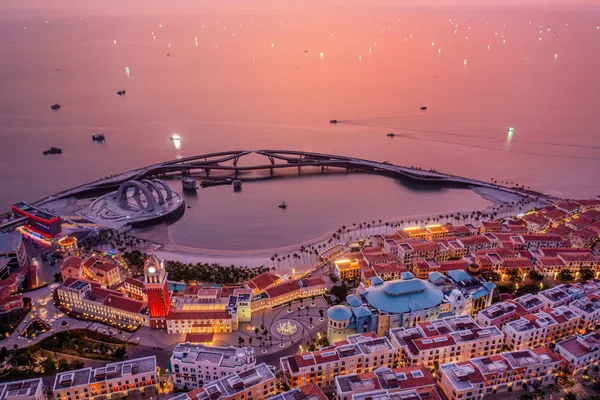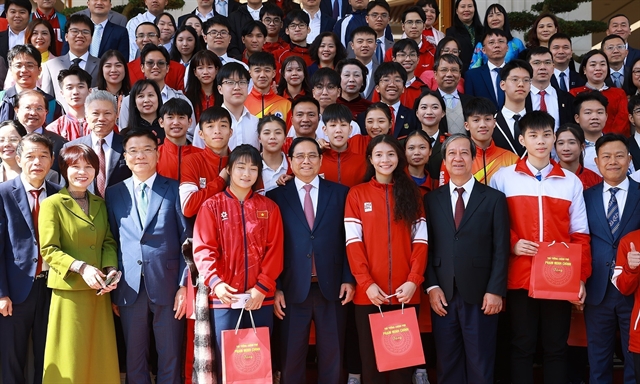.jpg) Society
Society

 |
| Shrimp-rice farming fields in Cà Mau Province’s Thới Bình District.— VNA/VNS Photo Huỳnh Anh |
CÀ MAU — The southernmost province of Cà Mau is restructuring agricultural production toward increasing aquaculture and reducing rice cultivation.
It has turned more than 1,100ha of unproductive rice fields into breeding aquatic species or rotating the cultivation of rice and aquatic species, according to its Department of Agriculture and Rural Development.
Of the area, nearly 950ha in coastal areas are rotating growing rice in the rainy season and breeding shrimp in the dry season when fields are affected by saltwater intrusion and are not suitable for growing rice.
The profit of the shrimp-rice farming model is about VNĐ68 million (US$2,900) per hectare a year, higher than the mono-rice farming model.
Phan Hoàng Vũ, director of the department, said the province had implemented the shrimp-rice farming model since 2000 and has nearly 40,000ha of shrimp-rice farming, mostly in Trần Văn Thời, U Minh and Thới Bình districts and Cà Mau City.
“The model is sustainable in terms of economy, production efficiency and improving income for farmers,” Vũ said.
Thới Bình District has implemented many models of intercropping giant river prawns and rice in the same fields.
Nguyễn Hoàng Bạo, deputy chairman of the Thới Bình People’s Committee, said giant river prawns bred in rice fields had few diseases and low loss risks compared to breeding black tiger shrimp and white-legged shrimp, and the investment cost was not large for farmers who have medium financial capacity.
Besides the shrimp-rice farming model, the district had the potential for breeding mud crabs to improve the lives of farmers, he said.
With the use of advanced farming techniques, the yields of giant river prawns and mud crabs had increased significantly, he said.
The district was soliciting investment to establish giant river prawn breeding areas for export and develop linkages among stakeholders in breeding and selling mud crabs, he said.
The district’s mud crabs are now sold mostly through traders and farmers who do not have these linkages.
Mud crabs bred in the province are well known nationwide for their deliciousness and are exported.
The restructuring of agricultural production based on natural conditions in the province has helped improve production efficiency and turned challenges into opportunities, according to the department.
Saltwater intrusion and drought have become more severe year after year and most rice growing areas affected by natural disasters have been turned into other crops in the dry season.
Vũ, director of the department, said after nearly five years of implementing Government Resolution 120, which called for sustainable and climate-resilient development in the delta, the province had achieved effective results in agricultural production.
People and companies are willing to participate in implementing the resolution and the province has received the assistance of international organisations, and this helps improve the lives of local people and solve climate change issues, according to the director.
The province has implemented 328 projects to assist nearly 5,000 households develop production, diversify livelihoods and reduce poverty sustainably in difficult communes.
It is focusing on developing brackish water shrimp farming areas on a large scale to have large output and high quality to increase shrimp competitiveness.
It is also developing high quality rice growing areas in localities that have sufficient conditions such as farming areas not affected by saltwater intrusion with irrigation works and intensive farming techniques.
The province has 111,000ha of rice, with the cultivation of high quality rice accounting for 60 per cent.
The yield and quality of rice have been increased, according to the department.
However, the province still faces difficulty in securing sufficient irrigation water for agricultural production as its investment for irrigation works has only met 15 per cent of the demand.
Linkages
Cà Mau has developed linkages among stakeholders for the key products of rice and shrimp.
The country’s largest shrimp producing province has more than 31,000ha of rice and shrimp which are cultivated under linkages among related stakeholders.
Lê Văn Mưa, director of the Trí Lực Rice Shrimp Co-operative in Thới Bình District’s Trí Lực Commune, said more farmers had switched to use advanced farming techniques and had linked among themselves to establish co-operatives.
When joining co-operatives, farmers cultivate their crops at the same schedule and this helps them manage diseases better, and buy input materials and seeds at cheaper prices, according to Mưa.
“Co-operatives also provide farming techniques for their members to achieve better production efficiency. The output of co-operatives is large so they are easily getting farm contracts to secure outlets,” he said.
The province harvested 386,000 tonnes of seafood last year, up 5.3 per cent against 2021. Of the output, shrimp accounted for more than 218,000 tonnes.
It exported $1.3 billion of seafood last year, accounting for 12 per cent of the country’s total seafood export value. — VNS




